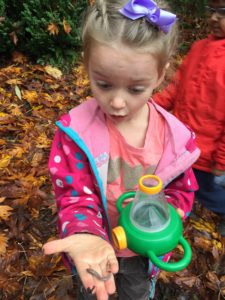December 5, 2016
Karolyn Toews
Inquiry Question:
How can I create a space for my students, for me and for others to share our stories?
My Artifact:
Over the past semester I have been confronted with the notion of “teachable moments”. They have not only occurred in my classroom, but I have met them face-to-face on this journey of life that I am on. Intrigued by this on-going theme, I spent some time reading about how others articulated it in their own experiences. What I found was that out of these varied moments of “stop” came a story or lesson that needed to be shared. This artifact is something I wrote allowing me to process and voice the connections I’ve discovered between my own story and those of others.
My Pedagogy:
The best spaces for storytelling are not necessarily planned or organized but happen organically through emotional engagement and connection to the everyday. They happen when my role as a teacher shifts from being in control of the story to becoming a participant in its narrative. As I “reflect-in-action” (Schön 1978), I pay attention to “stop moments”; creating a space for listening and sharing as stories unravel through wonder, inquiry and surprise (Bianchi 2014, Fels 2012, Toews 2015). The language that breaks out of these discoveries is supported within somatic and mythic frameworks (Egan, 2005). These tools have opened our minds and voices to metaphorical relationships that exist between ourselves and other living things. I carefully tend to these unexpected stories, providing opportunities to practice respect as we share in community (Toews 2016). Together we collaborate; reframing our understanding as we simultaneously listen to each other’s voice, linking one variation of human experience to another (Baldwin 2005). Stories cry out to be valued and heard. They invite us in to listen, to connect and then to respond with a posture of grace and humility.
Baldwin, C. (2005). Storycatcher: Making sense of our lives through the power and practice of story. Novato, CA: New World Library.
Bianchi, L. (2014). The Keys to Wonder-Rich Science Learning. In Wonder-full education: The centrality of wonder in teaching and learning across the curriculum, ed. K.Egan, A. Cant and G. Judson, 188-200. New York and London: Routledge.
Dana, N.F., & Yendol-Hoppey, D (2008). (Ch.5) The reflective educator’s guide to classroom research. Thousand Oaks, CA: Corwin Press.
Egan, K. (2005). An imaginative approach to teaching. San Fransisco, CA; Jossey-Bass.
Fels, L. (2012). Collecting Data Through Performative Inquiry: A Tug on the Sleeve. In Youth Theatre Journal 26: 50-60.
Fels, L. & Belliveau, G. (2008). (Ch. 2) Exploring curriculum: Performative inquiry, role drama and learning. Vancouver, BC: Pacific Educational Press.
Schön, D. (1978). Educating the Reflective Practitioner. San Fransisco, CA: Jossey-Bass.
Toews, K. (2016). January 25: Opening the Spaces for Community. karolyntoews.com
Toews, K. (2015). Field Study: What kind of scaffolding do I need to put in place for my students to become effective storytellers?
Capacities Covered this Semester:
- Investigate educational theories and philosophies to inform your practice.
- Foster a rich understanding of how emotional and imaginative engagement supports learning and teaching and contributes to meaning-making.
- Promote a learning environment that fosters respect for and awareness of imagination’s role in learning for all students.

